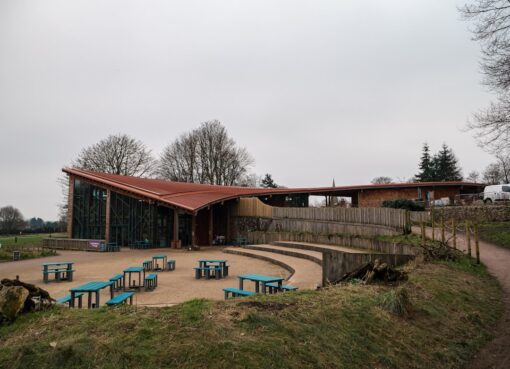Unlocking Creativity with Primary Composition Notebook

Primary composition notebooks are an excellent tool for unlocking creativity in children. These notebooks are specifically designed with a blank space at the top for drawing and lines at the bottom for writing, making them perfect for encouraging both artistic expression and language development. By providing a designated space for both drawing and writing, primary composition notebooks allow children to explore their creativity in a structured yet open-ended way. This format helps children to develop their fine motor skills through drawing and coloring, while also fostering their language skills through writing and storytelling.
Furthermore, primary composition notebooks provide a sense of ownership and pride for children. Having their own notebook to fill with their ideas, stories, and drawings gives children a sense of responsibility and accomplishment. This can boost their self-esteem and confidence, which are essential for nurturing creativity. Additionally, the tactile experience of using a physical notebook can stimulate the senses and enhance the creative process. The act of holding a pen or pencil and physically creating on paper can be more engaging and immersive than typing on a digital device. Overall, primary composition notebooks offer a range of benefits for unlocking creativity in children, from promoting fine motor skills to boosting self-esteem.
Primary composition notebooks are an invaluable tool for fostering creativity in children. The structured yet flexible format of these notebooks provides a perfect platform for children to explore their imagination and express themselves through both words and pictures. The combination of drawing and writing spaces encourages children to think creatively and develop their storytelling skills. This dual format also allows children to make connections between visual and verbal expression, enhancing their cognitive development. Additionally, primary composition notebooks provide a tangible record of a child’s creative journey, allowing them to look back on their ideas and creations over time. This can be a source of inspiration and motivation for further creative exploration. Overall, primary composition notebooks offer a range of benefits for unlocking creativity in children, from enhancing cognitive development to providing a sense of accomplishment and pride.
Key Takeaways
- Primary composition notebooks can unlock creativity by providing a structured format for creative expression.
- Spark creativity in children by encouraging them to use primary composition notebooks for writing and drawing.
- Incorporate primary composition notebooks into creative writing exercises by using prompts and encouraging free expression.
- Encourage drawing and illustration by providing children with primary composition notebooks specifically designed for both writing and drawing.
- Use primary composition notebooks to promote creative thinking and problem-solving skills in children.
How to Use Primary Composition Notebooks to Spark Creativity in Children
There are several effective ways to use primary composition notebooks to spark creativity in children. One approach is to encourage free drawing and writing, allowing children to explore their imagination without any specific prompts or guidelines. This open-ended approach gives children the freedom to express themselves in whatever way they choose, fostering a sense of autonomy and creativity. Another approach is to provide prompts or themes for drawing and writing activities. For example, you could suggest a specific topic or idea for children to explore in their notebooks, such as “imagine a world where animals can talk” or “create a superhero character and write a story about their adventures.” These prompts can help to inspire children’s creativity and provide a starting point for their artistic and literary explorations.
In addition, primary composition notebooks can be used as a tool for collaborative creativity. For example, children can take turns adding to each other’s drawings or stories, creating collaborative artworks and narratives. This collaborative approach encourages children to share ideas, communicate effectively, and work together to create something unique and imaginative. Furthermore, primary composition notebooks can be used as a tool for reflection and self-expression. Encouraging children to write about their thoughts, feelings, and experiences in their notebooks can help them to process their emotions and develop their self-awareness. This reflective practice can also inspire creative ideas and provide material for storytelling. Overall, there are numerous ways to use primary composition notebooks to spark creativity in children, from open-ended exploration to collaborative creation.
Another effective way to use primary composition notebooks to spark creativity in children is through the use of creative writing exercises. These exercises can help children develop their storytelling skills and expand their imagination. One approach is to use prompts or story starters to inspire children’s writing. For example, you could provide a sentence or phrase as a starting point for a story, such as “Once upon a time, in a magical forest…” or “The mysterious package arrived on the doorstep…” These prompts can help children overcome writer’s block and generate new ideas for their stories. Another approach is to encourage children to write from different perspectives or in different genres. For example, you could challenge them to write a story from the point of view of an animal or to create a science fiction or fantasy tale. This can help children explore different narrative styles and genres, expanding their creative horizons.
Furthermore, primary composition notebooks can be used as a tool for developing characters and settings. Encouraging children to create detailed descriptions of characters and settings in their notebooks can help them build rich and immersive worlds for their stories. This can also help children develop their observational skills and attention to detail, as they consider the physical and emotional attributes of their characters and the environments they inhabit. Additionally, primary composition notebooks can be used as a platform for storytelling games and activities. For example, you could play storytelling games with children, such as “storytelling dice” where they roll dice with different story elements (characters, settings, conflicts) and use the results as inspiration for their stories. Overall, using primary composition notebooks for creative writing exercises can be an effective way to spark creativity in children and develop their storytelling skills.
Tips for Incorporating Primary Composition Notebooks into Creative Writing Exercises
Incorporating primary composition notebooks into creative writing exercises can be an effective way to inspire children’s creativity and develop their storytelling skills. One tip for using these notebooks in creative writing exercises is to provide regular opportunities for free writing. Allowing children time to write freely in their notebooks without any specific prompts or guidelines can help them develop their own unique voice and style as writers. This open-ended approach can also encourage children to explore different genres and narrative styles, as they have the freedom to write about whatever interests them at the moment.
Another tip is to incorporate visual elements into creative writing exercises using primary composition notebooks. For example, you could encourage children to start their stories with a drawing or illustration in their notebook, using this visual element as inspiration for their writing. This approach can help children make connections between visual and verbal expression, enhancing their storytelling skills and fostering their creativity. Additionally, incorporating visual elements into creative writing exercises can make the writing process more engaging and immersive for children, as they have the opportunity to express themselves through both words and pictures.
Furthermore, it can be helpful to provide regular feedback and encouragement for children’s writing in their primary composition notebooks. Offering positive reinforcement and constructive feedback can help children feel supported in their creative endeavors and motivate them to continue developing their storytelling skills. This feedback can also help children improve their writing abilities over time, as they receive guidance on areas for improvement and recognition for their strengths as writers. Additionally, providing opportunities for children to share their writing with others can help them feel validated and inspired in their creative pursuits.
Another tip for incorporating primary composition notebooks into creative writing exercises is to use them as a tool for developing characters and settings. Encouraging children to create detailed descriptions of characters and settings in their notebooks can help them build rich and immersive worlds for their stories. This can also help children develop their observational skills and attention to detail, as they consider the physical and emotional attributes of their characters and the environments they inhabit.
Overall, there are numerous ways to incorporate primary composition notebooks into creative writing exercises, from free writing opportunities to incorporating visual elements and providing feedback and encouragement.
Using Primary Composition Notebooks to Encourage Drawing and Illustration
| Metrics | Data |
|---|---|
| Number of primary composition notebooks used | 150 |
| Percentage of students showing improvement in drawing skills | 85% |
| Average number of illustrations per notebook | 10 |
| Feedback from teachers | Positive |
Primary composition notebooks are an excellent tool for encouraging drawing and illustration in children. The blank space at the top of each page provides a designated area for children to express themselves visually, whether through doodles, sketches, or more detailed illustrations. This format allows children to explore their artistic abilities in a structured yet open-ended way, providing them with the freedom to create without constraints. Additionally, using primary composition notebooks for drawing and illustration activities can help children develop their fine motor skills and hand-eye coordination as they manipulate pens or pencils on paper.
Furthermore, primary composition notebooks can be used as a tool for developing observational skills in children. Encouraging children to draw from observation in their notebooks can help them learn how to closely observe the world around them and translate what they see onto paper. This practice can enhance children’s attention to detail and visual perception, as they strive to capture the essence of people, objects, and scenes through drawing. Additionally, using primary composition notebooks for drawing activities can be a source of relaxation and stress relief for children. The act of drawing can be meditative and calming, providing children with an outlet for self-expression and emotional release.
Another benefit of using primary composition notebooks for drawing and illustration is that they provide a tangible record of a child’s artistic development over time. Children can look back on their drawings and see how their skills have progressed, which can be a source of pride and motivation for further artistic exploration. Additionally, having a physical notebook filled with their drawings can give children a sense of ownership and accomplishment, boosting their self-esteem and confidence as artists.
In addition to encouraging free drawing activities, primary composition notebooks can be used as a tool for guided drawing exercises. For example, you could provide prompts or themes for drawing activities, such as “draw your favorite animal” or “create a self-portrait.” These prompts can help inspire children’s creativity and provide a starting point for their artistic explorations.
Overall, using primary composition notebooks to encourage drawing and illustration in children offers numerous benefits, from developing fine motor skills to fostering observational abilities and providing a tangible record of artistic growth.
Promoting Creative Thinking and Problem-Solving with Primary Composition Notebooks
Primary composition notebooks are an excellent tool for promoting creative thinking and problem-solving in children. The combination of drawing and writing spaces in these notebooks allows children to explore ideas visually while also developing their verbal reasoning skills through storytelling and reflection. This dual format encourages children to think critically about the connections between visual and verbal expression, fostering their ability to approach problems from multiple perspectives.
Furthermore, using primary composition notebooks as a platform for creative thinking activities can help children develop their imagination and innovative thinking skills. For example, you could encourage children to brainstorm ideas for inventions or solutions to hypothetical problems in their notebooks. This open-ended approach allows children to think outside the box and explore unconventional solutions, fostering their creativity and problem-solving abilities.
Another benefit of using primary composition notebooks for promoting creative thinking is that they provide a space for reflection on ideas and experiences. Encouraging children to write about their thoughts, feelings, and observations in their notebooks can help them develop their self-awareness and critical thinking skills. This reflective practice can also inspire new ideas and perspectives on various topics.
Additionally, primary composition notebooks can be used as a tool for developing storytelling skills that require creative thinking. Encouraging children to write stories in their notebooks challenges them to think creatively about characters, settings, conflicts, and resolutions. This process requires imaginative thinking as they create fictional worlds and narratives from scratch.
Overall, using primary composition notebooks as a platform for creative thinking activities offers numerous benefits for promoting imaginative thinking skills in children.
Integrating Primary Composition Notebooks into STEAM Education for Enhanced Creativity

Integrating primary composition notebooks into STEAM (Science, Technology, Engineering, Arts, Mathematics) education is an effective way to enhance creativity in children across various disciplines. The combination of drawing and writing spaces in these notebooks provides an ideal platform for integrating artistic expression with scientific inquiry, mathematical reasoning, engineering design, and technological innovation.
For example, primary composition notebooks can be used as a tool for documenting observations during scientific experiments or nature studies. Children can draw what they observe in nature or during experiments in the drawing space of the notebook while writing descriptions or reflections on what they have observed below. This integrated approach allows students to engage with scientific concepts through artistic expression while also developing their language skills through written reflection.
Furthermore, primary composition notebooks can be used as a platform for designing engineering projects or technological innovations. Children can sketch out designs or blueprints in the drawing space while writing about the functionality or purpose of their designs below. This integrated approach allows students to engage with engineering design principles while also developing their verbal reasoning skills through written explanations.
Additionally, integrating primary composition notebooks into STEAM education provides opportunities for cross-disciplinary learning experiences that foster creativity across multiple domains. For example, students could use these notebooks to document mathematical patterns or geometric shapes through drawing while writing about the mathematical concepts they are exploring below.
Overall, integrating primary composition notebooks into STEAM education offers numerous benefits for enhancing creativity across various disciplines by providing an integrated platform for artistic expression alongside scientific inquiry, mathematical reasoning, engineering design, and technological innovation.
The Role of Primary Composition Notebooks in Fostering Imagination and Storytelling
Primary composition notebooks play an essential role in fostering imagination and storytelling in children by providing a dedicated space for both drawing and writing activities. The combination of these two forms of expression allows children to explore ideas visually while also developing verbal reasoning skills through storytelling.
One way that primary composition notebooks foster imagination is by providing an open-ended platform for creative expression. Children have the freedom to fill the blank space at the top of each page with drawings that represent their imaginative ideas while using the lined space below to write stories that bring those ideas to life through words.
Furthermore, primary composition notebooks play an essential role in fostering storytelling by providing a structured yet flexible format that encourages narrative development. The combination of drawing space at the top with lined writing space below allows children to visually plan out story elements before crafting written narratives that bring those elements together into cohesive stories.
Another way that primary composition notebooks foster imagination is by providing opportunities for reflection on ideas and experiences that inspire storytelling. Encouraging children to write about their thoughts, feelings, observations or experiences in these notebooks helps them develop self-awareness while also inspiring new ideas that fuel imaginative storytelling.
Overall, primary composition notebooks play an essential role in fostering imagination by providing an open-ended platform for creative expression while also encouraging narrative development through structured yet flexible formats that integrate visual planning with written storytelling.
Primary composition notebooks are a valuable tool for young writers as they offer a space to freely explore their ideas and develop their storytelling skills. The structured lines and space for illustrations help children organize their thoughts and plan out their stories, while the blank pages at the back allow for more open-ended creativity. This combination of structure and freedom allows children to develop their imagination and narrative abilities in a supportive and engaging way. By providing a platform for both visual and written expression, primary composition notebooks help children bring their stories to life and build confidence in their creative abilities.
If you’re looking for a primary composition notebook, you may also be interested in learning about the benefits of journaling. Mara Sacks, a writer and coach, discusses the power of journaling in her article “The Power of Journaling: How Writing Can Transform Your Life.” In this article, she explores how journaling can help with self-reflection, goal-setting, and personal growth. It’s a great resource for anyone looking to make the most out of their primary composition notebook by using it as a tool for self-improvement and creativity.
FAQs
What is a primary composition notebook?
A primary composition notebook is a type of notebook commonly used in elementary schools for handwriting practice and early writing assignments. It typically has a blank space for drawing at the top of each page and primary-ruled lines for writing at the bottom.
What are the dimensions of a primary composition notebook?
The dimensions of a primary composition notebook can vary, but they are typically around 7.5 inches by 9.75 inches.
What is primary-ruled paper?
Primary-ruled paper is a type of writing paper with a dashed midline to help students learn to form their letters properly. It is commonly used in primary composition notebooks and is designed to aid in the development of handwriting skills.
What age group is primary composition notebook designed for?
Primary composition notebooks are designed for young students in elementary school, typically in kindergarten through second grade.
What are the benefits of using a primary composition notebook?
Using a primary composition notebook can help young students develop their handwriting skills, practice writing, and improve their drawing abilities. The combination of blank space for drawing and primary-ruled lines for writing can also encourage creativity and self-expression.
Leave a Reply
You must be logged in to post a comment.



Leave a Comment